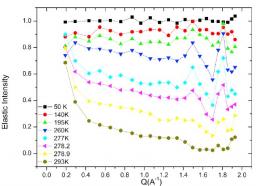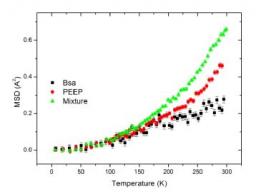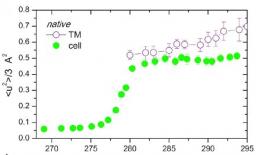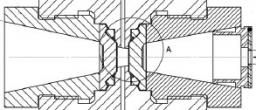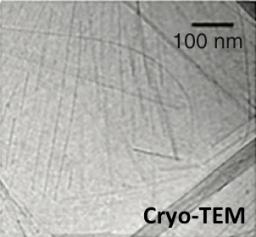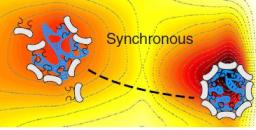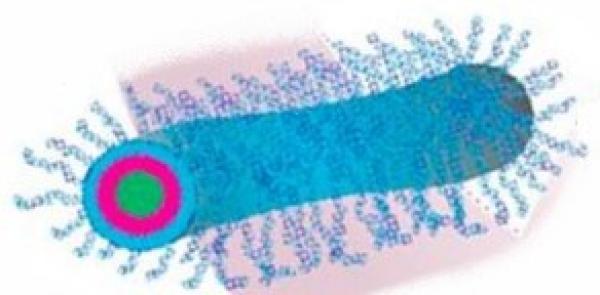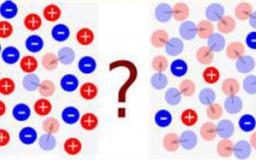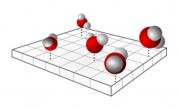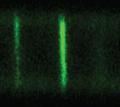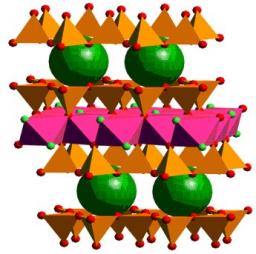22 septembre 2019
Daniela Russo, Maya Dimova Lambreva, Christiane Alba Simionesco, Pierre Sebban,and Giuseppina Rea
Studies on the dynamical properties of photosynthetic membranes of land plants and purple bacteria have been previously performed by neutron spectroscopy, revealing a tight coupling between specific photochemical reactions and macromolecular dynamics.
27 août 2019
D. Russo, A. De Angelis, A. Paciaroni, B. Frick, N. de Sousa, F. R. Wurm, and J. Teixeira
We investigate the relaxation dynamics of protein−polymer conjugates by neutron scattering spectroscopy to understand to which extent the coating of a protein by a polymer can replace water in promoting thermal structural fluctuations.
30 mai 2019
"Dynamics properties of photosynthetic microorganisms probed by incoherent neutron scattering"
Daniela Russo, Maya Dimova Lambreva, Christiane Alba Simionesco, Pierre Sebban, and Giuseppina Rea
Biophysical Journal, 116 (9) (2019) 1759-1768
Studies on the dynamical properties of photosynthetic membranes of land plants and purple bacteria have been previously performed by neutron spectroscopy, revealing a tight coupling between specific photochemical reactions and macromolecular dynamics.
04 mai 2019
B. Annighöfer , A. Hélary, A. Brulet, A. Colas de la Noue, C. Loupiac and S. Combet
Review of Scientific Instruments 90 (2019) 025106
Abstract :
We report on a high pressure (HP) cell designed for the determination of the structure of molecular solutions by small-angle neutron scattering (SANS). The HP cell is fitted up with two thick metallic windows that make the device very resistant under hydrostatic pressures up to 600 MPa (or 6 kbar).
01 avril 2019
Andrés Marcoleta, Frank Wien, Véronique Arluison, Rosalba Lagos, Rafael Giraldo
Bacterial Amyloids (2019)
Amyloids are supramolecular protein assemblies based on fibrillar arrangements of β‐sheets that were first found as linked to neurodegenerative and systemic human diseases. However, there is now overwhelming evidence on alternative roles of amyloids as functional assemblies and as epigenetic determinants of beneficial traits, both in Fungi and Metazoa.
03 janvier 2019
Sophie Combet, Fabrice Cousin, Human Rezaei, Sylvie Noinville
Soluble oligomers of prion proteins (PrP), produced during amyloid aggregation, have emerged as the primary neurotoxic species, instead of the fibrillar end-products, in transmissible spongiform encephalopathies. However, whether the membrane is among their direct targets, that mediate the downstream adverse effects, remains a question of debate.
15 octobre 2018
Raphael Dos Santos Morais, Olivier Delalande, Javier Perez, Dominique Mias-Lucquin, Melanie Lagarrigue, Anne Martel, Anne-Elisabeth Molza, Angelique Cheron, Celine Raguenes-Nicol, Thomas Chenuel, Arnaud Bondon, Marie-Sousai Appavou, Elisabeth Le Rumeur, Sophie Combet, and Jean-Francois Hubert
Scaffolding proteins play important roles in supporting the plasma membrane (sarcolemma) of muscle cells.
09 août 2018
Maelenn Chevreuil, Didier Law-Hine, Jingzhi Chen, Stéphane Bressanelli, Sophie Combet, Doru Constantin, Jéril Degrouard, Johannes Möller, Mehdi Zeghal and Guillaume Tresset
The survival of viruses partly relies on their ability to self-assemble inside host cells. Although coarse-grained simulations have identified different pathways leading to assembled virions from their components, experimental evidence is severely lacking.
20 juin 2018
Unravelling a mechanism of action for a cecropin a‑melittin hybrid antimicrobial peptide: the induced formation of multilamellar lipid stacks
T. Silva, B. Claro, B. F. B. Silva, N. Vale, P. Gomes, M.-S. Gomes, S. S. Funari, J. Teixeira, D. Uhríková, and M. Bastos, Langmuir, 2018, 34 (5), pp 2158–2170.
An understanding of the mechanism of action of antimicrobial peptides is fundamental to the development of new and more active antibiotics.
17 avril 2018
Structural characterization of nanoparticles formed by fluorinated poly(2-oxazoline)-based polyphiles,
Anna Riabtseva, Leonid I. Kaberov, Laurence Noirez, Vasyl Ryukhtin, Corinne Nardin, Bart Verbraeken, Richard Hoogenboom, Petr Stepanek, Sergey K. Filippov, European Polymer Journal 99 (2018) 518.
12 avril 2018
La diffusion des macromolécules dans les cellules ne suit généralement pas des lois simples de diffusion du fait de la grande quantité et diversité de molécules présentes dans ce milieu.
26 octobre 2017
Raphael Dos Santos Morais, Olivier Delalande, Javier Pérez, Liza Mouret, Arnaud Bondon, Anne Martel, Marie-Sousai Appavou, Elisabeth Le Rumeur, Jean-François Hubert, and Sophie Combet
Obtaining structural information on integral or peripheral membrane proteins is currently arduous due to the difficulty of their solubilization, purification, and crystallization (for X-ray crystallography (XRC) application).
03 octobre 2017
Pour survivre dans leur milieu, les bactéries doivent s'adapter à des conditions de croissance très différentes. Cette propriété est de première importance lorsque ces dernières doivent coloniser un hôte.
06 septembre 2017
Stehane Longeville et Laura-Roxana Stingaciu
Translational diffusion of macromolecules in cell is generally assumed to be anomalous due high macromolecular crowding of the milieu. Red blood cells are a special case of cells filled quasi exclusively (95% of the dry weight of the cell) with an almost spherical protein: hemoglobin. Hemoglobin diffusion has since a long time been recognized as facilitating the rate of oxygen diffusion through a solution.
01 septembre 2017
Les liquides ioniques sont des électrolytes composés exclusivement de cations et d’anions organiques en interaction. Leurs remarquables stabilités chimique et électrochimique en font d’excellents candidats pour le développement de systèmes de stockage d’énergie, devant répondre à des critères stricts quant au risque de combustion.
21 mai 2016
Sur Terre, l'eau est une substance abondante, dont le cycle d'évaporation - condensation – solidification (transitions vapeur – liquide - solide) relève de l'expérience quotidienne. Les propriétés physiques de l'eau et son diagramme de phase complet sont cependant bien plus complexes que ne le laisse paraitre ces propriétés familières.
28 novembre 2011
Haad Bessbousse, Marie-Claude Clochard et Travis L. Wade (IRAMIS/LSI)
Les métaux lourds sont des éléments toxiques et des normes de concentration de plus en plus exigeantes sont imposées pour la qualité de l'eau, qui demandent le développement de nouvelles techniques d'analyses performantes.
13 avril 2010
J. Deschampsab, F. Audonnetac, N. Brodie-Linderad, M. Schoeffela et C. Alba-Simionescoac
Quelle est la plus basse température à laquelle l'eau peut rester liquide ?
La surfusion de l'eau est un phénomène bien connu et des records de température ont été atteint (~ 235 K = -40 °c) par cette voie. Un autre moyen pour maintenir de l'eau liquide à des températures négatives consiste à confiner le liquide dans une structure nanométrique de matériaux poreux.
28 avril 2009
Elmar C.
05 décembre 2008
Communiqué de presse commun CEA-CNRS
Les molécules qui constituent un fluide sont tellement petites et nombreuses qu’à notre échelle nous pouvons considérer les fluides comme des milieux continus.
03 mai 2006
N. Malikovaa, A. Cadènea, V. Marrya, E. Duboisa, P. Turqa, J.-M. Zanottib, S. Longevilleb,
aLaboratoire Liquides Ioniques et Interfaces Chargées, CNRS et Univ. P&M Curie
bLaboratoire Léon Brillouin, CEA-CNRS
On trouve très tôt des traces de l’utilisation des argiles dans les activités humaines : poterie et matériaux de construction bien sûr, mais aussi fabrication de papier et de médicaments...










